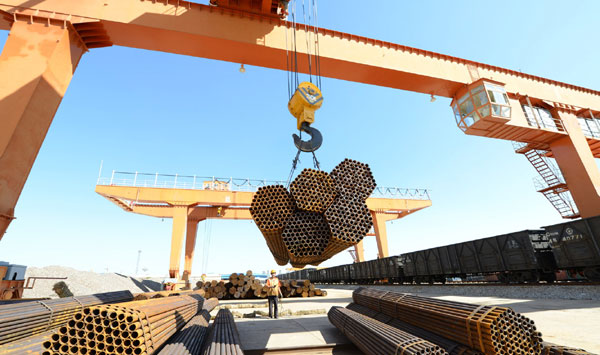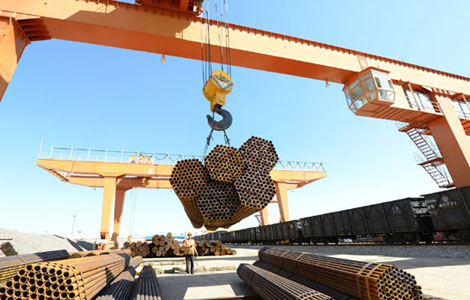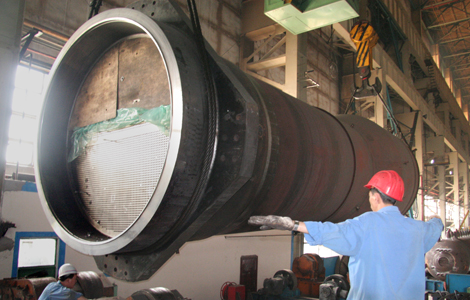Getting freight traffic back on the rails
Updated: 2013-08-08 07:58
By Hu Yongqi (China Daily)
|
||||||||
Niu Huiyong has been running Xinyang Storage and Transportation Co in Henan province for more than 20 years. In his opinion, the railway used to be a curate's egg, good in parts: While the extensive network made it possible to ship freight to remote destinations, the time-consuming process of booking space on the train, loading the goods and awaiting confirmation of delivery was always a source of disappointment and frustration.
Niu recalled an experience from 1993 when he applied to ship 1,000 metric tons of rice from Henan to Sichuan province via the railway. Unfortunately, the goods were delayed at the station for two months and the client threatened to sue Niu for breach of contract. The case never came to court, but the added silver lining for Niu was that during the time the goods were delayed, the price of rice rose by 20 percent, earning him an extra 40,000 yuan ($6,500) in profit.
|
 Workers load steel goods at Wangjiaying West Railway Station in Kunming, Yunnan province. Cargo transport reforms have boosted the development of China's logistics industry. Wang Jianyun / for China Daily |
"I wasn't really very grateful to the railway for the additional income, though, because that was a one-in-a-thousand event. Usually, the delays resulted in lost profit and credit," said Niu.
In July, however, Niu's attitude toward the railway changed markedly after the carrier instigated reforms. For the first time in Niu's experience, the paperwork was completed quickly and the goods were loaded and en route to the destination in a single day, an unheard of development.
On June 15, China Railway Corp introduced a reform aimed at improving efficiency and providing a better service. The reform was part of a plan to transform the railway freight sector into a modern logistics industry, one characterized by easier, faster service and lower prices.
A month after the reform, freight volumes began to rise, turning around years of declines. Kunming Railway Bureau alone transported 1,061 freight cars during the second half of June, an increase of 9.2 percent from the first two weeks of the month. Things continued to improve in July, when an average of 2,485 freight cars traveled by rail every day, a month-on-month increase of 17 percent, according to the bureau.
Having been given a taste of the new order, many logistics companies hoped to see the reform improve the service permanently, as predicted by transportation experts.
- Li points way for railways reform
- Ex-railways minister found guilty
- More cooperation on railway sought
- New railway makes travel 'cheaper and safer'
- New High-speed railway starts operation
- China-Russia freight railway resumes service
- Qinghai-Tibet Railway expands its reach
- The inside track on the Yunnan-Vietnam Railway
Most Viewed
Editor's Picks

|

|

|

|

|

|
Today's Top News
China to be leading business travel market
Cards make paying global tuition easier
Probes not targeting foreign brands
Sino-US trade gap narrows
Dairy firms hit with fines
A stage set for big innovation
Exports, spending 'to ebb'
Islands dispute hammers attitudes
US Weekly

|

|












